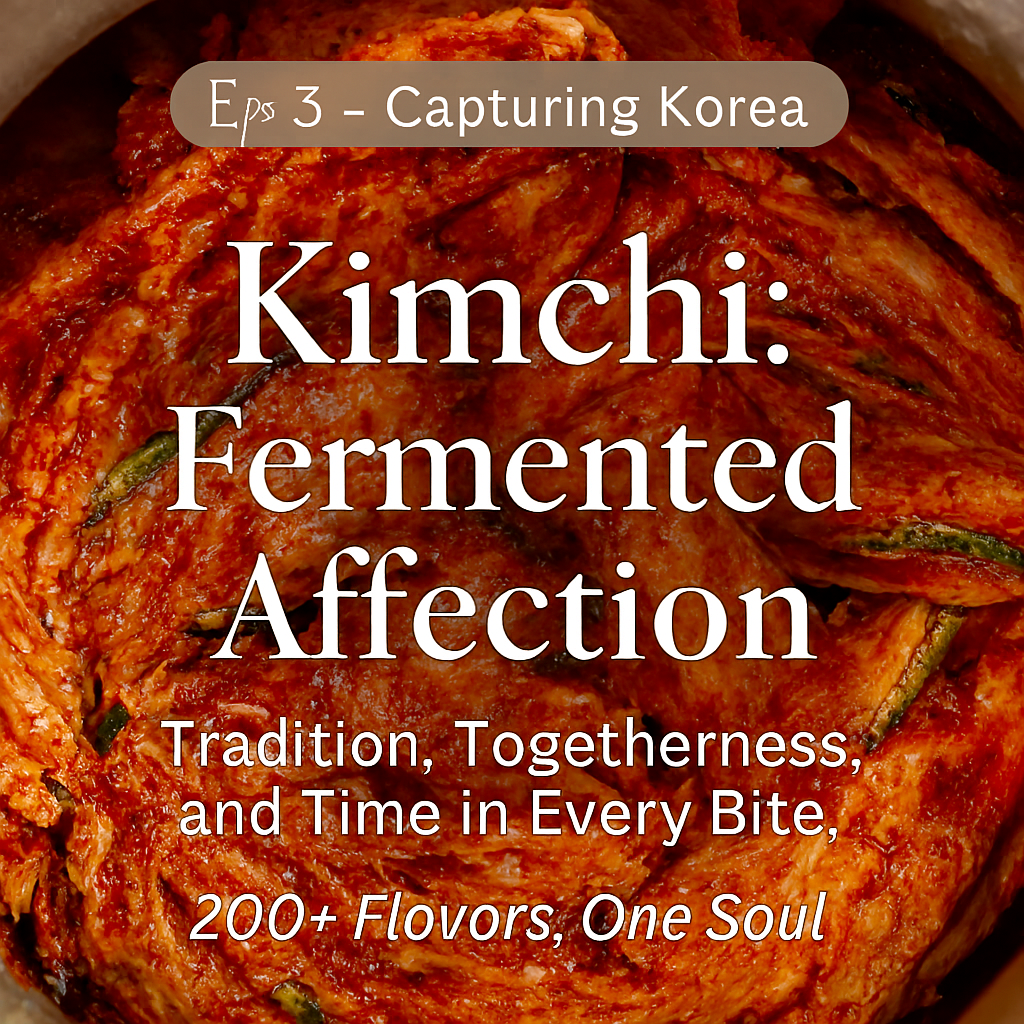
Korean Food Culture and the Spirit of Community
Kimchi is more than just a side dish.
It’s a symbol of time, care, and connection—a flavorful thread woven into the fabric of Korean life.
From humble kitchens to global tables, kimchi tells a story of resilience, creativity, and togetherness.
🥬 A Dialogue with Nature
Born from Korea’s seasonal rhythms, kimchi began as a way to preserve vegetables for the long winter.
Cabbage, radish, chili flakes, garlic, and ginger come together in a slow fermentation process that transforms simple ingredients into something deeply nourishing.
This process isn’t rushed—it’s patient, like the changing of seasons. The result is a food that’s alive, evolving in flavor and texture over time.
Fermentation, in Korean tradition, is not just science—it’s intuition.
It’s about knowing when the salt is just right, when the temperature is perfect, and when the taste has matured.
This quiet wisdom has been passed down through generations, often without written recipes—just memory and feel.
Source: Kimchi throughout millennia – Journal of Ethnic Foods
👩👩👧👦 Kimjang: Making Together, Sharing Together
Every autumn, families and neighbors gather for kimjang—the communal making of kimchi.
It’s a tradition filled with laughter, teamwork, and warm meals shared after a long day of preparation.
Kimjang isn’t just about food—it’s about bonding, generosity, and the joy of doing something together.
The act of making kimchi in large batches, then sharing it with others, reflects a deep-rooted Korean value: jeong.
Jeong is hard to translate—it’s affection, empathy, and a sense of belonging.
Through kimjang, jeong is kneaded into every leaf of cabbage, every spoonful of seasoning.
Even today, in modern apartment complexes, neighbors still exchange containers of homemade kimchi.
It’s a gesture that says, “I care,” without needing words.
Source: UNESCO Intangible Heritage – Kimjang
🌶️ A Thousand Flavors, One Soul
No two kimchis are the same.
– Jeolla Province favors rich, seafood-infused flavors.
– Gangwon Province leans toward lighter, refreshing styles.
– Jeju Island uses radish and local ingredients for a unique twist.
Each variation reflects the land, climate, and culture of its region—making kimchi a living map of Korea.
There are over 200 documented types of kimchi, from spicy napa cabbage to watery dongchimi, to mustard leaf kimchi and even green onion kimchi.
Each type serves a different purpose—some are for summer, some for winter, some for healing, and some simply for joy.
Source: The History of Kimchi – Amazing Food & Drink
🌍 From Local Staple to Global Star
Today, kimchi is winning hearts around the world.
Praised for its health benefits and bold taste, it’s found in restaurants from New York to Paris.
Chefs are experimenting with kimchi tacos, kimchi pasta, and even kimchi cocktails.
Yet at its core, kimchi remains a food of togetherness—made to be shared.
Korean immigrants have carried kimchi across oceans, preserving their heritage through fermentation.
In many ways, kimchi has become a cultural ambassador—introducing Korea’s warmth, depth, and complexity to the world.
Source: Kimchi’s Global Journey – Journal of Ethnic Foods
Kimchi carries the emotions of Korea.
It speaks of seasons, family, and the quiet strength of tradition.
It’s spicy, yes—but also tender.
Next time you taste it, listen closely—it might just tell you a story.
📌 Up Next: We journey through Korea’s breathtaking seasons in “Land of Four Seasons” 🍂🌸🌞❄️
This post is part of the 10-part series “Capturing Korea”, exploring the heart of South Korea through culture, people, and place.
'Korea' 카테고리의 다른 글
| A Cultural Journey Through Korea: 5 Must-See Festivals This Fall (0) | 2025.09.29 |
|---|---|
| Cap Kor 4 - Land of Four Seasons (1) | 2025.09.28 |
| Cap Kor Episode 1: Hangeul — Language of Care (0) | 2025.09.26 |
| Capturing Korea — Series Introduction (0) | 2025.09.26 |
| 7 Must-Visit Korea Travel Destinations This Early Autumn & Essential Packing List (0) | 2025.09.25 |



